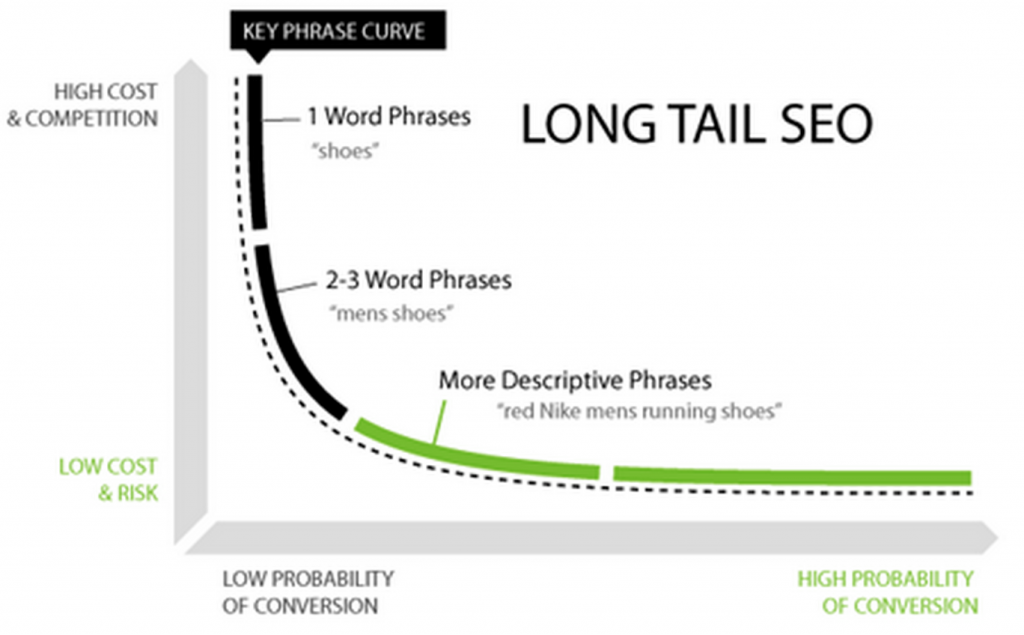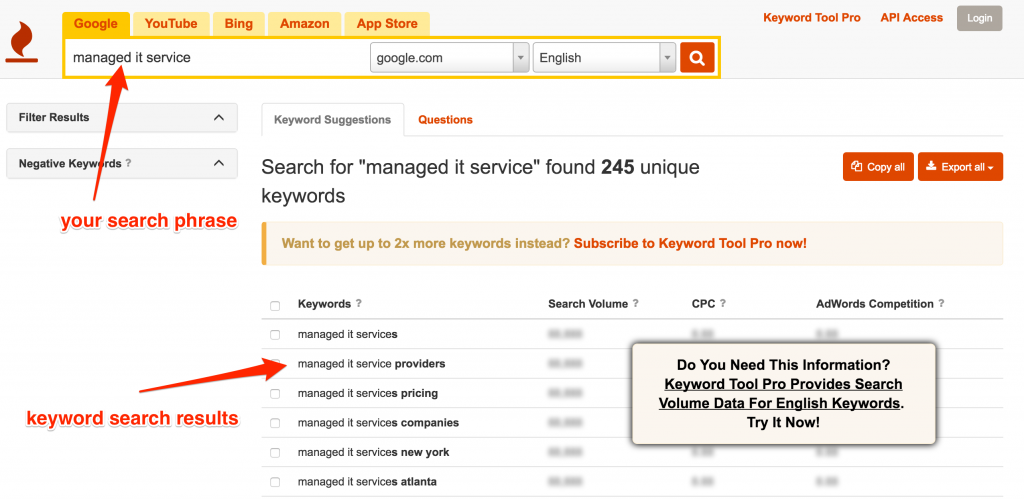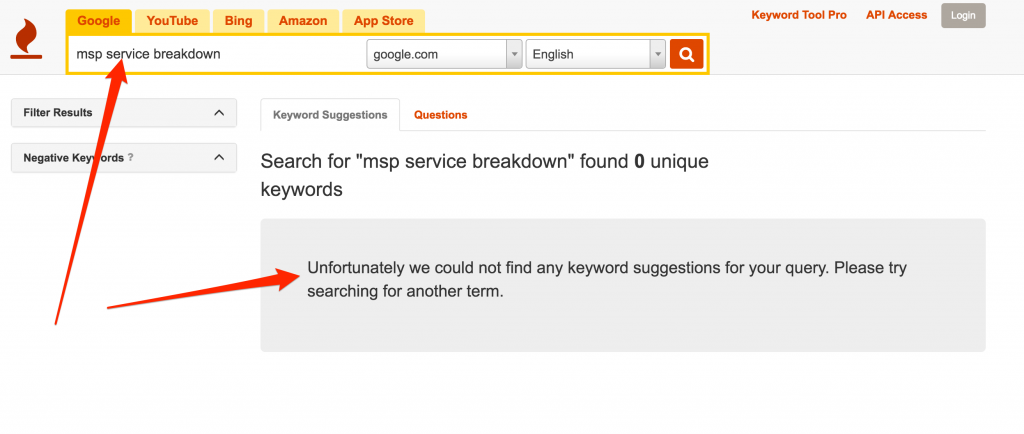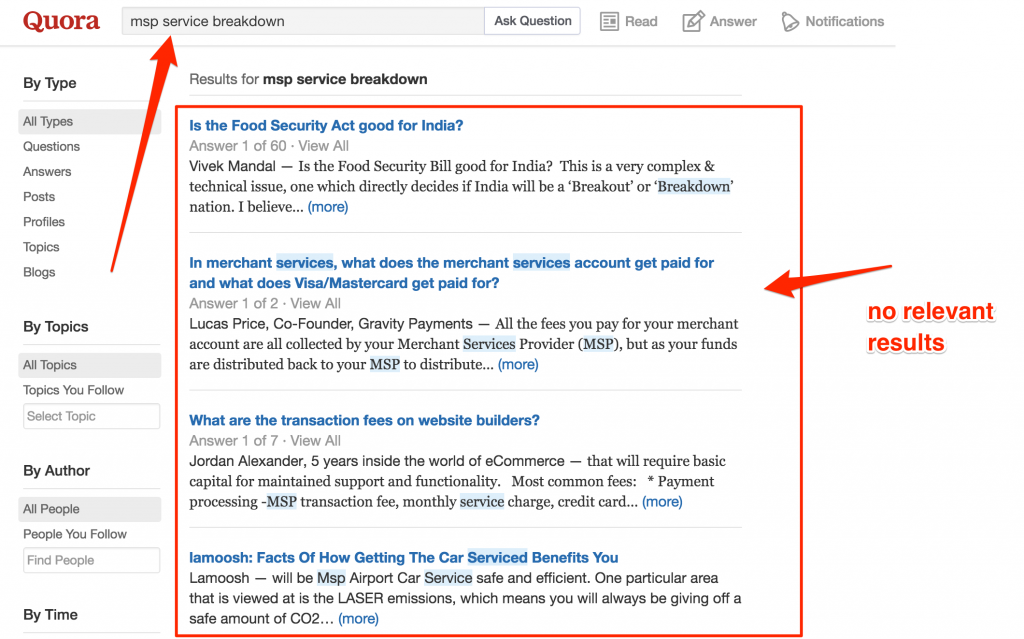You know:
491,000 domains compete for the phrase “managed service provider“ in the US. If you’re in Canada, you have to compete with even more of them.
And to position your website for the term “managed IT services provider“, you must expect to have to battle with over 82,000 other companies for a good spot.
Needless to say, ranking for the top MSP-related keywords isn’t easy.
Not impossible, though.
But to do it, you need to go beyond just writing relevant, well-optimized content, and building links. You need to lay a proper groundwork for your SEO.
Lucky for you, in this post, I’ll show you the 3 most basic SEO tasks that although are relatively simple to do, require a bit of an understanding of how SEO works and will give you an unfair advantage in the search rankings.
And don’t worry. I know that I’m referring to them as the foundation of your SEO. But you can implement these tasks even if your strategy has already been running for some time.
So, without any further ado…
#1. Validate If You’re Targeting the Right Keywords
Every day your potential clients type keywords related to your services into Google, hoping to find advice, information or even that perfect MSP to help ease their IT pains.
They use various words and phrases they think best describe what they’re looking for. But they also ask questions and paste fragments of information they already have, in hope to uncover more.
And what’s important is that they might be using completely different phrases than the ones you’ve optimized your content for.
Instead of “cloud computing”, they might look for “business online storage”. When trying to find more information on a network architecture, they might actually type keywords related to servers into Google, and so on.
Or instead just searching for your services category, they use what’s known as long-tail keywords – longer, more descriptive variations of a search term.

All this happens because clients often understand your services differently, without the jargon or terminology you’re so accustomed to.
And so, as the first step, you need to validate whether your audience actually uses the keywords you target.
Luckily, the process isn’t difficult.
Here are a couple of ways to do it:
Check if your keyword appears among the popular keyword search results
To start off, use tools like keywordtool.io (and don’t worry, you don’t have to register for any of their subscription plans. The free plan is enough for this exercise). Type your keyword into the search box and see if your phrase (along with its variations) appear in the results.
Note: I’m deliberately skipping various keyword research metrics like search volume or competition.
In this exercise, you’re only looking for indicators that your audience actually uses the keywords. And so, if the tool can find keyword suggestions based on your main phrase, it suggests that people are using this phrase when searching Google.

However, lack of any suggestions might indicate a phrase that’s either rarely used or never been typed into the search box at all.

Find out if people use your phrase on Quora
This is a true keyword popularity litmus test, helping you establish if your audience actually uses the phrase in real life.
But why is discovering it so important? You see, that’s because of how, in recent years, we’ve changed the way we search. For example, instead of using generic keywords, we now ask the search engine questions and use common-speak in search phrases.
Why do it on Quora? Simple, because that’s where people go to ask questions and look for information. And what’s more, they write those questions exactly how they understand them, using terminology they’re familiar with.
So, go to Quora.com and type the phrase you want to validate into the search box.

Just like with the previous exercise, you’re looking for nothing more but mentions of the phrase.

#2. Match Keywords to the User Intent
Once you’re sure that the audience actually uses phrases you’ve optimized the site for, it’s time to find out if you’re serving the right content per keyword.
In other words, you need to align your content with the intent a person has for conducting the search. And believe me, it’s not as obvious as you may think.
Sharon Hurley Hall points in her article on Crazy Egg:
“Understanding what users want (known as user intent) has become a driving force in search engine optimization (SEO) and search marketing to help bring more people to your site. […] help users to find what they want when they search, deliver on your promise with your web content, and you’ll get more people taking up your offer.”
User intent describes the reason WHY someone performed a particular search. For example, someone typing phrases like “buy Asus X551”or “buy Asus laptop” most likely intents to purchase such an item.
However, a person looking for “Asus X552 reviews” might not be ready to buy. Instead, they seek more information about a product they consider buying.
The same rule applies for any other type of keywords, including content marketing assets. For example, someone looking for “slow laptop” probably intents to find out more about a problem they’re experiencing with their computer. As a result, they’re less likely to respond to a sales message. However, they might be prone to sign up to an email list offering tips for managing a Windows-based machine.
Similarly, a person searching for “laptop repair center” will most likely be interested in hiring a specialist to fix their equipment. As a result, they’ll look for sales message, benefits and other proof to convince them to hire you.
By matching keywords to a user intent, you can ensure that you serve visitors the exact information they’ve been looking for. What’s more, by knowing what stage of the buying process they’re at (measured by their intent), you can display relevant calls to action to convert them into leads and push further in the sales process.
#3. Research What Your Competitors Are Doing
Finally, analyze what else your competitors are doing to gain higher rankings.
But let’s be clear about something here:
Competitor research is neither unethical or illegal.
Companies have been engaged in various forms of spying on each other from pretty much the dawn of business. True, some people take it too far. In general, however, there is nothing wrong with collecting and analyzing data on a rival company.
SEO is no different. Various SEO tools allow you to take a sneak peek at your competitors’ strategies to help you make better business decisions, spot new opportunities, and highlight some quick fix solutions too.
So what specific competitor strategies you should research?
Keywords
Using tools like SEMrush, you can quickly establish what keywords your competitors target in their strategy. Are they targeting mainly brand related phrases (i.e. their company or product name) or optimizing their site for their service categories?

(Screenshots showing a domain’s organic keywords results in SEMrush)
Rankings
You should also monitor how your rankings compare to the top competitors. It would help you identify keywords they put the biggest focus on. And this, in turn, could reveal phrases offering the best commercial opportunity (i.e. keywords that convert the most searchers into leads)
Backlinks
Backlinks are of the key ranking factors affecting your site’s performance in search. Every quality link pointing back to your site helps you get higher rankings.
And analyzing your competitors’ backlinks offers you an opportunity to:
Compare your linking profiles to establish who has more quality links pointing to their site. This, in turn, will help you to assess how much work you still have to do to overtake them in rankings.
Identify low hanging fruit – backlinks you could quickly recreate. Certain backlinks are unique to a domain. But many others are easy to replicate for anyone. Identifying and recreating them could offer you a jump start in link building efforts.
Sign up below to receive our monthly IT Services advice + other cool stuff straight to your inbox.